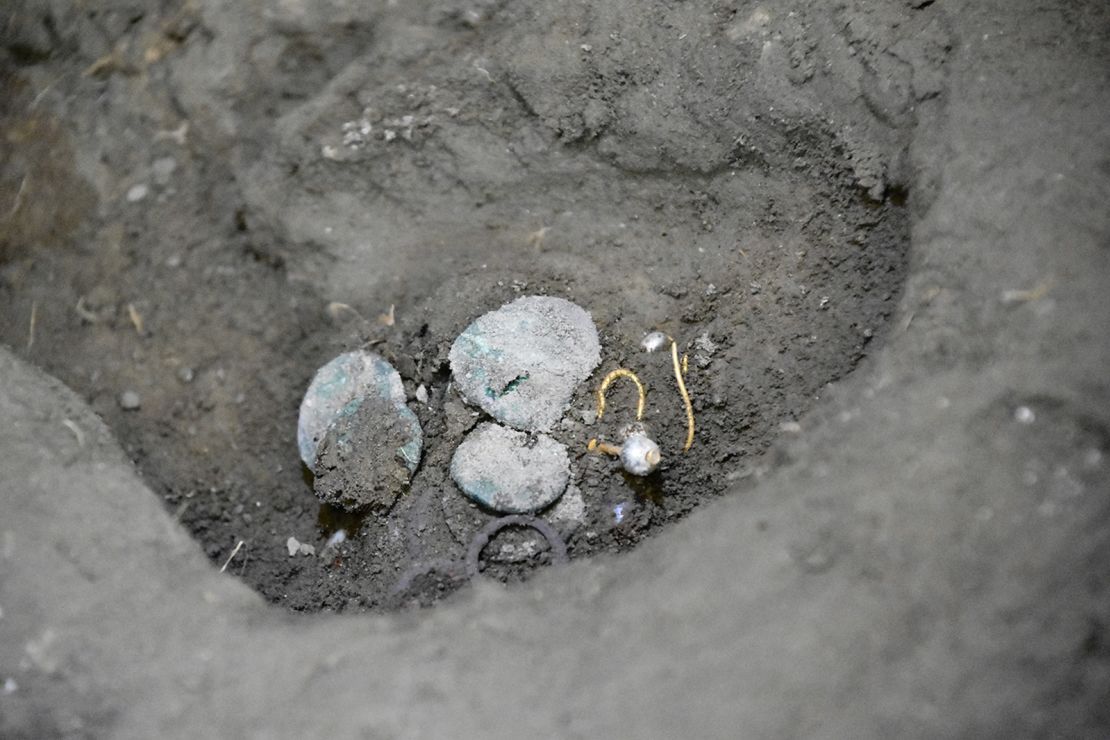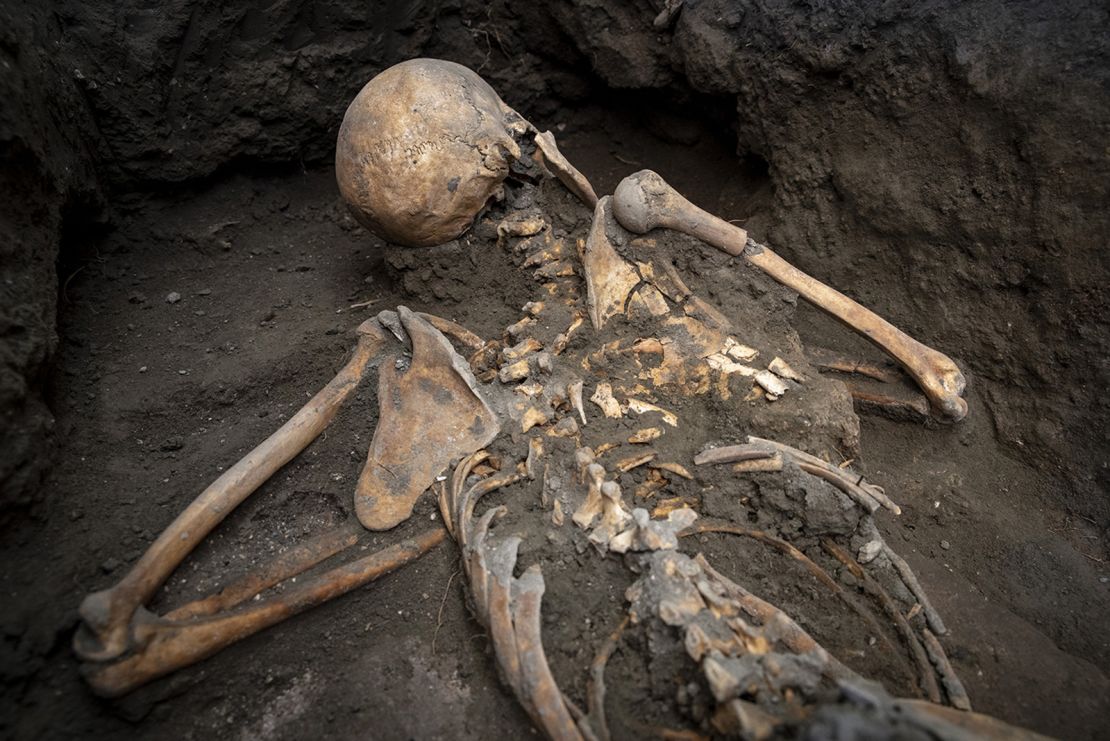Sign up for CNN’s Wonder Theory science newsletter. Explore the universe with news on fascinating discoveries, scientific advancements and more.
The skeletal remains of a man and a woman have been unearthed in Pompeii, along with a cache of coins and precious jewelry, archaeologists say.
The discovery is part of a dig in Region IX of the buried city that has uncovered a plethora of ancient buildings and artifacts, including a bakery, a home renovation and rooms decorated with elaborate drawings. Pompeii was home to around 20,000 people when it was buried under ash and volcanic glass during the 79 AD eruption of Mount Vesuvius.

The latest discovery adds more detail to the picture of what life was like in the city before the disaster. The bodies were found in a small bedroom that was being used as a temporary sleeping space while the large home was undergoing renovation, according to the archaeologists who made the discovery.
The woman was found on the bed. Clutched in her hands was a small cache of gold, silver and bronze coins, as well as gold and pearl earrings. “The room was chosen as a refuge by the two people, while waiting for the end of the fall of pumice that had been gradually filling the open spaces for hours in the rest of the house,” the archaeologists said in a statement.

Because the door was closed, the room remained free of pumice, but the couple were trapped inside. “Trapped in the cramped little room, their deaths were caused by the pyroclastic flow that buried them,” the archaeologists said.
The room, which contained a wooden bed, stool, chest and marble topped table, was near the Blue Shrine room, which was unearthed in June, and next to the large living area decorated with frescoes. Archaeologists also found bronze, glass and ceramic objects still in place on the table. A large bronze candelabrum was found on the floor.
“The opportunity to analyze the invaluable anthropological data relating to the two victims found within the archaeological context that marked their tragic end, allows us to recover a considerable amount of information about the daily life of the ancient Pompeiians and the micro-histories of some of them, with precise and timely documentation, confirming the uniqueness of the Vesuvian territory,” the park’s director, Gabriel Zuchtriegel, said.
He described the excavations as “a work in which archaeologists, anthropologists and volcanologists work together to reconstruct the last moments of the lives of men, women and children who perished during one of the greatest natural catastrophes of antiquity.”
The current excavations in Region IX were initially started to prevent the outer perimeter of the site from collapsing. They have provided some of the most important discoveries ever made in the ancient city.




